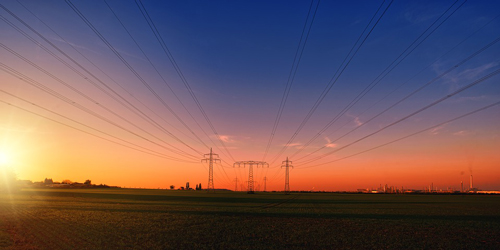
Wires and cables are used to transmit electrical (magnetic) energy, information, and realize the conversion of electromagnetic energy. Wires and cables in a broad sense are also referred to as cables for short. Cables in a narrow sense refer to insulated cables. It can be defined as a collection of the following parts : One or more insulated cores, and their respective possible coatings, total protective layer and outer protective layer. The cable can also have additional conductors without insulation.
Measures to prevent wires and cables from catching fire:
1. Ensure the construction quality, especially the production quality of the cable head must strictly comply with the specified requirements.
2. Strengthen cable operation monitoring to avoid cable overload operation.
3. Carry out the cable test on schedule, and deal with it in time if it is found to be abnormal.
4. The cable trench should be kept dry to prevent the cable from being damp, causing the insulation to drop and cause a short circuit.
5. Regularly clean the dust accumulated on the cable to prevent spontaneous combustion of the accumulated dust and cause the cable to catch fire.
6. Strengthen the regular verification and maintenance of the cable loop switch and protection to ensure its reliable operation.
7. When laying the cable, keep a sufficient distance from the heat pipe. The control cable should be no less than 0.5 meters; the power cable should be no less than 1 meter. The control cables and power cables should be slotted, layered and arranged separately, and cannot be placed overlapping each other. For parts that do not meet the requirements, the cable should be flame-retardant and heat-insulated.
8. Install fire alarm devices to detect fire in time to prevent cables from catching fire.
9. Take fire and flame retardant measures. Fire-retardant measures for cables include:
(1) Wrap the cable with a heat-insulating and flame-resistant material. When the cable is on fire, the wrapped cable is isolated from the fire by the heat-insulating and flame-resistant material to avoid burning. If the cable itself catches fire, the lack of oxygen in the dressing body can cause the fire to self-extinguish, preventing the fire from spreading outside the dressing body.
(2) The holes where the cables pass through the walls, pan bottoms, and shafts should be tightly sealed with refractory materials to prevent the spread and spread of high-temperature smoke when the cables are on fire, causing the fire to expand.
(3) Apply fireproof paint on the surface of the cable.
(4) Wrap the parts of the cable that need to be flameproof with fireproof tape.
(5) Install heat-resistant and fire-proof panels between cable layers to prevent inter-cable combustion and expand fire.
(6) Install segmented partition walls and fire doors in the cable channels to prevent the cables from burning and expand the fire.
10. Equipped with necessary fire fighting equipment and facilities. Common fire extinguishing equipment can be used to extinguish the fire of overhead cables, but automatic or remote control fire extinguishing devices, such as 1301 fire extinguishing device, water spray fire extinguishing device, etc., should be installed in the cable interlayer, shaft, channel and tunnel.
Extinguishing cable fires Extinguishing cable fires Fire When a cable fire occurs, you should promptly call the police, immediately identify the system and direction of the fired cable, adjust the operation mode of the fired cable as soon as possible, and cut off the power supply of the fired cable to exit operation. Toxic gas will be generated when the cable burns, so special attention should be paid to the protection of cable fire fighting.
















 RCCN WeChat QrCode
RCCN WeChat QrCode Mobile WebSite
Mobile WebSite